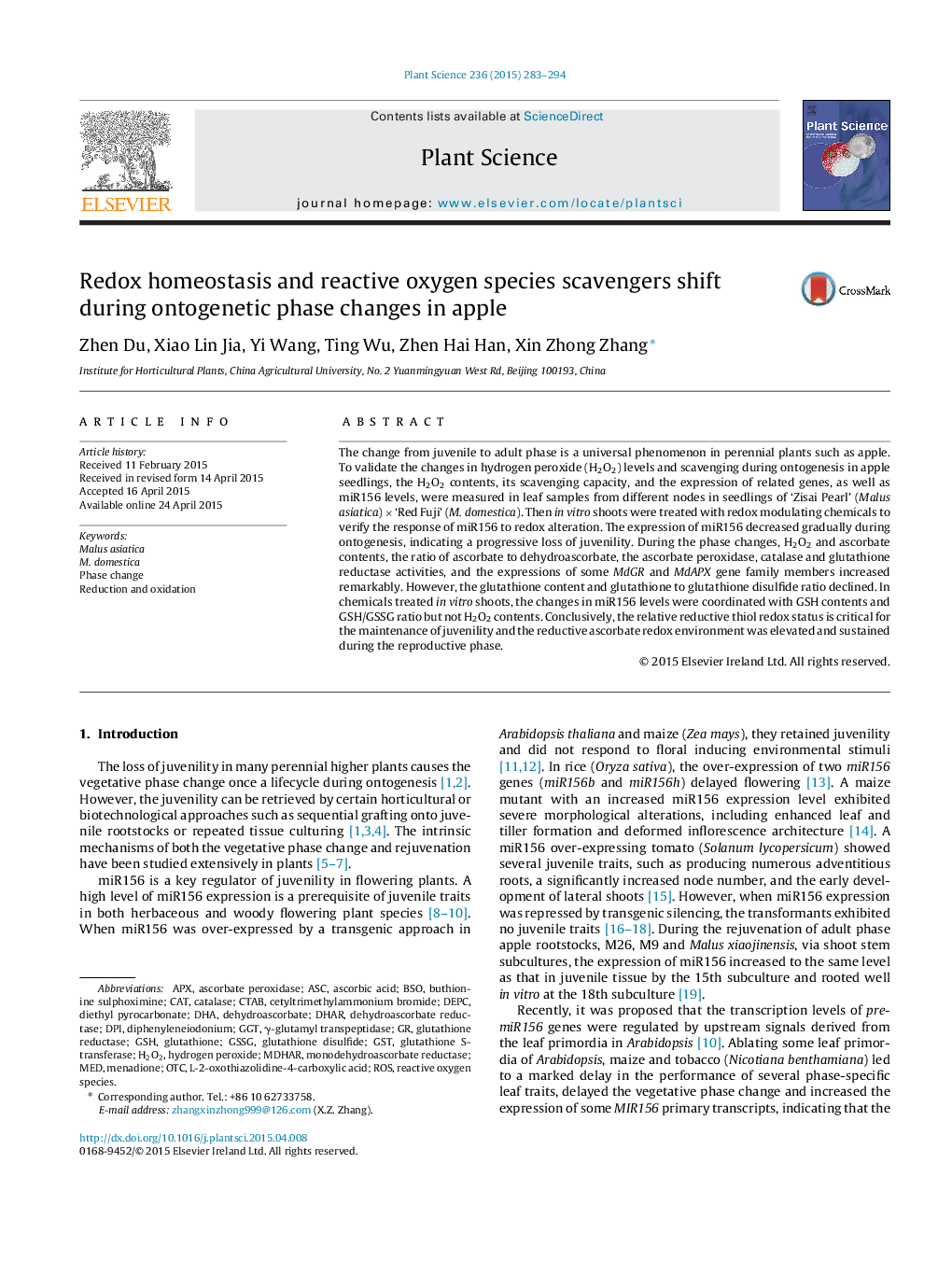| Article ID | Journal | Published Year | Pages | File Type |
|---|---|---|---|---|
| 2017038 | Plant Science | 2015 | 12 Pages |
•Both H2O2 content and the ROS scavenging capacity increased with the juvenility loss.•The reductive thiol redox status shifted to oxidative after phase change.•A reductive ascorbate redox environment was sustained during the reproductive phase.
The change from juvenile to adult phase is a universal phenomenon in perennial plants such as apple. To validate the changes in hydrogen peroxide (H2O2) levels and scavenging during ontogenesis in apple seedlings, the H2O2 contents, its scavenging capacity, and the expression of related genes, as well as miR156 levels, were measured in leaf samples from different nodes in seedlings of ‘Zisai Pearl’ (Malus asiatica) × ‘Red Fuji’ (M. domestica). Then in vitro shoots were treated with redox modulating chemicals to verify the response of miR156 to redox alteration. The expression of miR156 decreased gradually during ontogenesis, indicating a progressive loss of juvenility. During the phase changes, H2O2 and ascorbate contents, the ratio of ascorbate to dehydroascorbate, the ascorbate peroxidase, catalase and glutathione reductase activities, and the expressions of some MdGR and MdAPX gene family members increased remarkably. However, the glutathione content and glutathione to glutathione disulfide ratio declined. In chemicals treated in vitro shoots, the changes in miR156 levels were coordinated with GSH contents and GSH/GSSG ratio but not H2O2 contents. Conclusively, the relative reductive thiol redox status is critical for the maintenance of juvenility and the reductive ascorbate redox environment was elevated and sustained during the reproductive phase.
